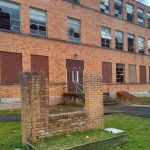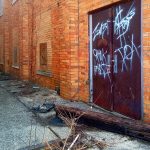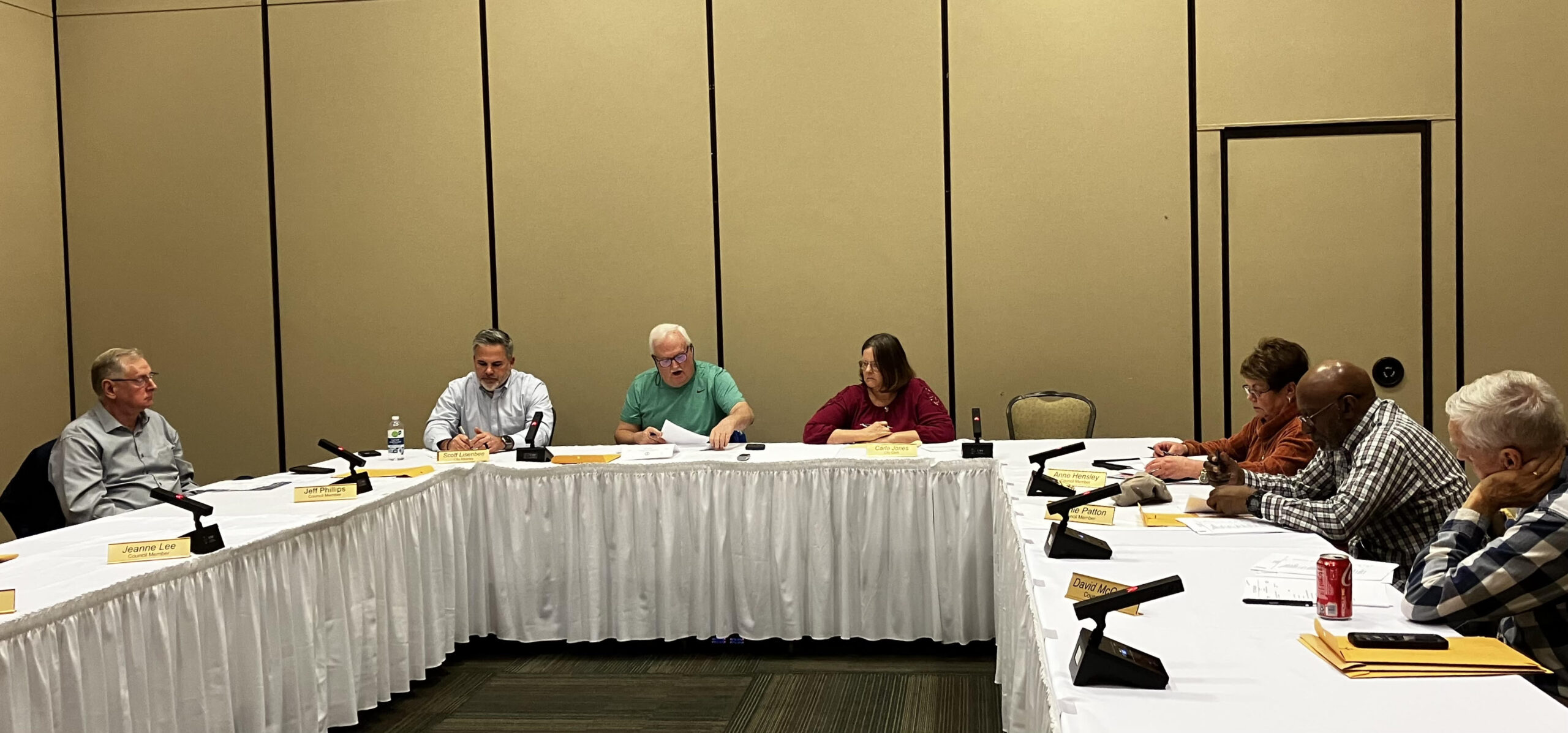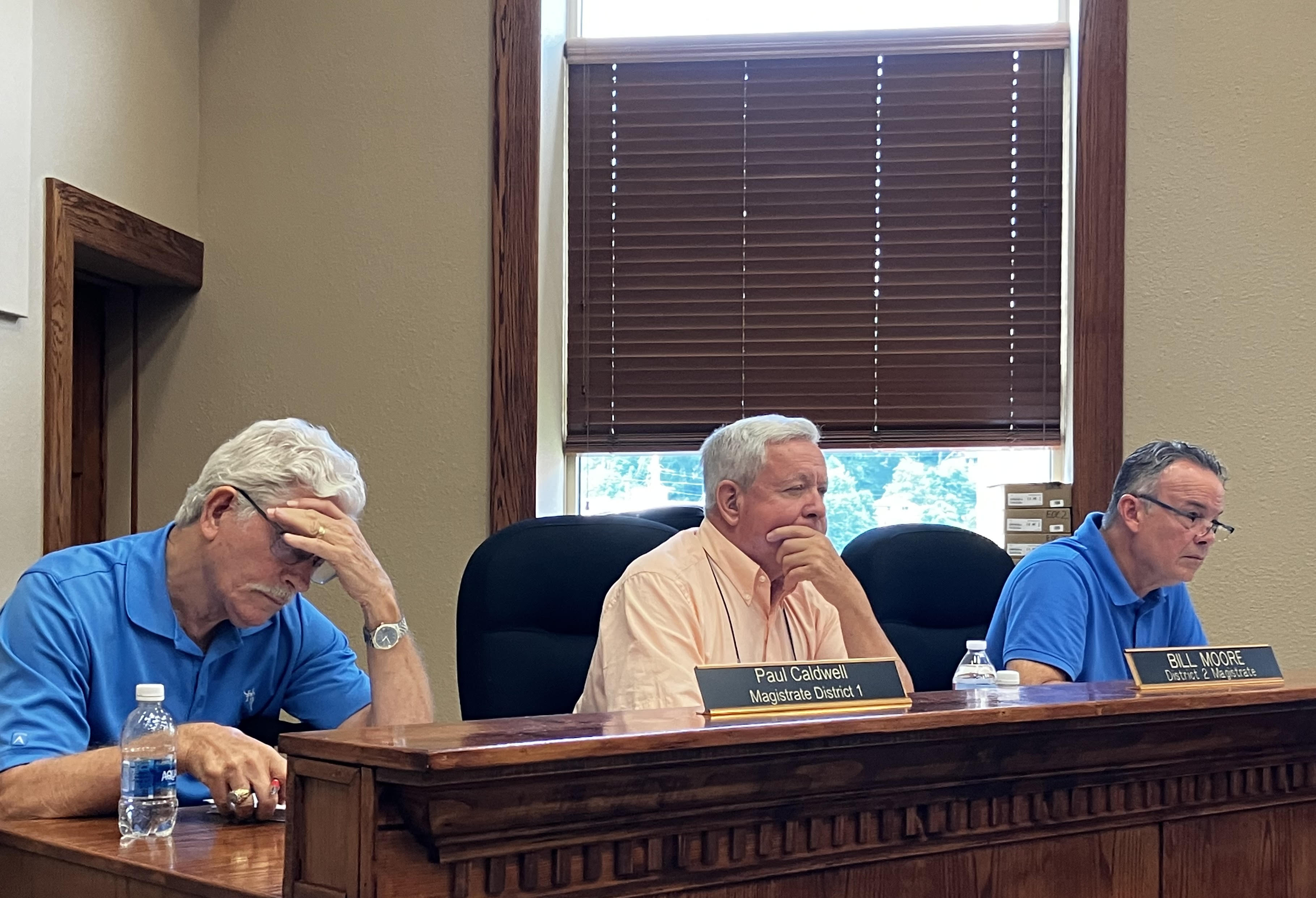Saving the school
Published 3:38 pm Wednesday, February 28, 2024


|
Getting your Trinity Audio player ready...
|
By Jennifer McDaniel
For the Enterprise
Renewed interest in saving the old Cumberland High School building has been generated in recent weeks with an online petition being shared to revitalize the once vibrant structure filled with both history and potential that has continued to fall into disrepair over the years. Graduates and community members are saddened by the shape of the building, which holds a special place in the hearts and memories of devout Redskins alumni and Cumberland residents who have long taken pride in their high school heritage.
Because the high school, which closed in 2008 due to county consolidation, was the collection of all the high schools in the Tri-City area, such as Benham and Lynch as well as Cumberland, it became a unique gathering ground where not only various cultures from coal towns collided, but also became known for academic excellence and having an impressive athletic powerhouse reputation during its over 75 years of existence.
Once a place where carefree dreams coming out of the coal fields transformed student lives in the halls and classrooms of the lone, brick building that rose out of the shadows of the area’s massive and ever-looming mining operations, the old Cumberland High School building now stands abandoned with multiple broken windows, plenty of graffiti, wires hanging loose from outlets, and shards of broken glass on the ground. Its future appears as desolate as the mining industry.
While it may be a universal desire for most people to treasure the place of their high school glory, what sets Cumberland High School apart from others in Harlan County is that many feel the ball was dropped in preserving it. James A. Cawood High School was turned into an elementary school, and Evarts High School is being protected and maintained by a non-profit group called Clover Fork Citizens For Progress to hopefully turn their school into a community multi-purpose center and lodging. In Cumberland, preservation efforts have not been as vigilant, and some even wistfully wonder if it has already reached the point of no return in saving the old high school. That’s not stopping one Cumberland man, however, in making a last-ditch effort to save his alma mater.
Jordan Blair, who has lived in Cumberland for the past 36 years and once attended the high school, started an online petition to save Cumberland High School on Feb. 9 that also places pressure on the building’s owner, Southeast Kentucky Community & Technical College (SKCTC), to either turn it over to an outside group capable of revitalizing it, or to further invest in its renovation. The petition can currently be accessed on Change.org and has already garnered hundreds of electronic signatures and support. Blair, who is also a Cumberland City Council member, is adamant that the historic structure should represent progress and not decay. He said Cumberland High School is the first building people see coming into town and should better represent the community that is working hard to economically transform their town after the decline in the coal industry.
“The state of disrepair this building is in does not reflect who we are as a community nor does it represent what we aspire to become,” Blair said. “It’s time we take action and transform this symbol of decay into one of progress and hope for future generations…As a citizen of the City of Cumberland, I have a deep-rooted connection to our city and its landmarks. The former Cumberland High School building is one such landmark – a place where I, along with many of my family members and friends, spent formative years. However, over time, this once vibrant institution has fallen into disrepair. Upon entering our beloved city, it’s the first structure that greets visitors and residents alike – an unfortunate representation of decay rather than progress.”
Blair said what motivated him to start the Save Cumberland High School petition was having lived in close proximity to the school for his entire life and being exposed to countless stories from people about their high school experiences, the friendships formed within its walls, and the impact the high school has had on many peoples’ lives, including his own.
“Witnessing the gradual deterioration of the building, with essential components being removed and the structural integrity compromised, has been disheartening,” Blair said. “Each piece of history stripped away diminishes not only the physical structure but also the collective memory and identity tied to the school. Moreover, the visible decay of such a prominent, local landmark reflects poorly on the community and sends negative signals to visitors entering Cumberland from Harlan. Preserving Cumberland High School is not just about safeguarding a building. It’s about honoring its legacy, preserving community heritage, and maintaining a sense of pride in our shared history.”
According to information provided by SKCTC Marketing and Public Relations Director Dr. Amy Simpson, Southeast purchased the former Cumberland High School building in 2010 for $200,000. Simpson also relayed that after former SKCTC President Vic Adams became the college’s leader, his administration explored various partnerships with the potential to use the facility.
“When those efforts did not reach fruition, the college conducted a feasibility study for full renovation and determined it would be cost prohibitive at $28 million,” Simpson said. “The college received a grant of $150,000 for the feasibility study, which has been completed. Those were the only monies appropriated for the building’s restoration during Dr. Adams’ presidency.
As the old high school has sat idle for several years now, its condition has worsened with time, even coming to the point where the City of Cumberland has imposed around $50,000 in fines upon Southeast. Cumberland Mayor Charles Raleigh said he tried to acquire the building soon after it closed but was not successful in his attempts.
“I approached the council to back me in asking the school board to donate it to the city instead the school board shut off the power that kept cameras going, then thieves robbed it of copper, broke out its windows, and set it on fire many times,” Raleigh said. “The city currently has around $50,000.00 in fines on the building now owned by the college. Several months ago, the property agent called me and asked if the fines still stood. I said yes. He asked if they gave it to us would we drop the fines. I said yes. That’s the last I’ve heard of it until now.”
Blair said that presently, the structural integrity of the high school remains intact. However, its visual appeal has significantly deteriorated during its 19 years of vacancy.
“Numerous windows are missing or shattered, remnants of high school sports memorabilia litter the hallways, wiring has been forcibly removed from the walls, and the gym floor bears evidence of damage, including apparent fire damage,” Blair said. “Witnessing the gradual decline of the gym, where personal memories were forged, evokes a profound sense of sadness. The realization that this once vibrant space could be repurposed for community benefit adds to the disappointment of its current state.”
Former Kentucky Wildcats quarterback and KHSAA Hall of Famer Freddie Maggard is one of the many Redskins alumni who is saddened by the current condition of the high school. Maggard, a sports legend from the Cumberland area, went on to become a popular Kentucky Sports Radio analyst and is now retired living in Versailles. But, the Redskins and Wildcats all-star has a strong affinity for his home, and that certainly includes Cumberland High School. Maggard described the current shape of the building as “heartbreaking,” saying that the preservation and future utilization plan should have been in place prior to the school closing and not decades after.
“The lack of forward thinking and proactive action remains to be an unfathomable error and an utter disregard for history and tradition,” said Maggard, a 1987 Cumberland High School graduate. “It’s tragic that remnants of Cumberland High School’s historical athletic achievements, some that still remain to be the standard in Harlan County and southeastern Kentucky, weren’t conserved to be displayed within the Tri Cities’ area. Same can be said for academic, band, or any and all other accomplishments.”
Maggard said it made him mad when he heard that trophies, awards, and pictures once displayed in the high school’s hallway trophy case had not been preserved. He added that he had admired how the town of Lynch had been able to preserve its high school Bulldog and Pirates memorabilia.
“The items were apparently abandoned to later be destroyed, tossed out, stolen, or vandalized,” Maggard said. “The gym floor was burned. That floor was more than pieces of wood. It was the home of CHS’s state champion girls’ basketball team. That’s completely unacceptable and an unimaginable disregard for tradition. Many students, coaches, families, administrators, and community members tirelessly worked to collectively earn those awards, trophies, and victories for the Tri Cities – for Cumberland, Benham, Lynch, and surrounding areas. To not protect the tangible spoils of triumph is a blatant insult.”
Although Maggard fully supports the Save Cumberland High School petition, he said he hopes the endeavor is not too late. Although Versailles has been his home for some time now, Maggard said his heart will always beat as a Cumberland Redskin and that while the high school may have seen better days, he believed better days were on the horizon for his hometown.
“CHS was a historical realization that should have been cherished, not abandoned and destroyed,” Maggard said. “…Perhaps CHS was simply in the wrong end of the county to matter. Regardless of the how or why, CHS’s current status is an embarrassment for alumni and faculty. The building is a tragic eyesore that’s located in the most beautiful part of our great commonwealth.”
When envisioning the future use of Cumberland High School, Blair said several things came to mind, such as a community center, a cultural center that could be a hub for local arts, an educational facility, a co-working space for entrepreneurs, freelancers, and small businesses, mixed-use development with a combination of residential, commercial and recreational spaces, and historic preservation through a museum, boutique, or hotel.
“Ultimately, the best reuse option will depend on factors such as community needs, available funding, zoning regulations, and the condition of the building,” Blair said. “Engaging stakeholders and conducting feasibility studies can help determine the most viable and beneficial use for the former high school building.”
Blair said preserving historic structures like Cumberland High School was important because it helped further a community’s cultural identity, provided opportunities for education about local history, and created sustainability benefits for economic development, such as attracting businesses and tourists. Another benefit, according to Blair, includes environmental sustainability by retrofitting historic buildings for modern use rather than demolishing them. He said preservation reduces the environmental impact of construction materials and conserves energy by reusing existing infrastructure. Increased community pride is evident with the historic preservation of structures by creating opportunities for community engagement and collaboration. And overall, Blair said, preserving historic buildings enriches the cultural, social and economic fabric of the community, making it a more vibrant and sustainable place to live and visit.
“When I say ‘Save Cumberland High School,’ I mean preserving its physical structure and repurposing it for a beneficial use that contributes to the well-being and development of the area,” Blair said. “Specifically, I envision the building being utilized by the college system, with a focus on restoring Cumberland as a central hub for educational programs. Historically, the Cumberland campus was a vital component of our town, and reviving it as such could reignite interest and investment in the area. Bringing back educational programs would attract people to Cumberland, fostering economic growth and community revitalization. However, if repurposing it for college programs proves unfeasible, alternative positive uses should be explored to prevent its deterioration.”
Blair’s goal is to initiate meaningful dialogue with SKCTC and to garner community support for preserving and repurposing Cumberland High School, ensuring that it remains a source of pride and opportunity for future generations.
“Our plea isn’t just about improving optics – it’s about reclaiming valuable space for public use,” Blair said. “This could serve as an opportunity to create something positive.”
Blair hopes the petition will prompt public communication by SKCTC, where the college will share any plans, timelines, and actions regarding the future of the Cumberland High School building. By demonstrating the widespread community interest and commitment to change through the petition, Blair hopes to catalyze positive outcomes and ensure that the concerns regarding the building’s fate are addressed constructively. He added that if restoration is not viable due to financial or other constraints, it may be proposed to demolish the building so that the property can be repurposed in a way that benefits the community.
“I’ve had nothing but a positive response,” said Blair concerning the petition. “I think many people share my opinion on this. If more people become active in trying to make things better here, that is a win in itself.”







